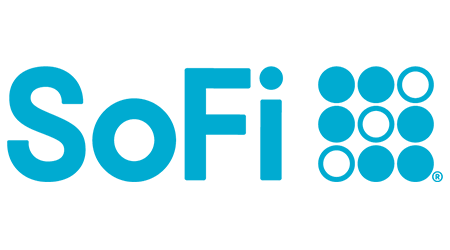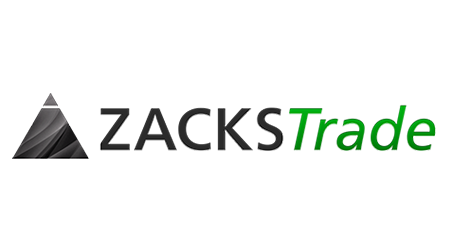
- Trade stocks, options, ETFs, mutual funds, alternative asset funds
- $0 commission on stocks, ETFs and options with no options contract fees
- Get up to $1,000 in stock when you open and fund a new account within 30 days
- Access to a financial planner
Bank of America is a banks - diversified business based in the US. Bank of America shares (BAC) are listed on the NYSE and all prices are listed in US Dollars. Its last market close was $34.39 – a decrease of 16.63% over the previous week. Bank of America employs 213,000 staff and has a trailing 12-month revenue of around $96.1 billion.



The Finder Score crunches 147 key metrics we collected directly from 18+ brokers and assessed each provider’s performance based on nine different categories, weighing each metric based on the expertise and insights of Finder’s investment experts. We then scored and ranked each provider to determine the best brokerage accounts.
We update our best picks as products change, disappear or emerge in the market. We also regularly review and revise our selections to ensure our best provider lists reflect the most competitive available.
Paid non-client promotion. Finder does not invest money with providers on this page. If a brand is a referral partner, we're paid when you click or tap through to, open an account with or provide your contact information to the provider. Partnerships are not a recommendation for you to invest with any one company. Learn more about how we make money.
Finder is not an advisor or brokerage service. Information on this page is for educational purposes only and not a recommendation to invest with any one company, trade specific stocks or fund specific investments. All editorial opinions are our own.
| Latest market close | $34.39 |
|---|---|
| 52-week range | $33.33 - $47.68 |
| 50-day moving average | $43.98 |
| 200-day moving average | $42.66 |
| Wall St. target price | $51.31 |
| PE ratio | 11.595 |
| Dividend yield | $1 (2.49%) |
| Earnings per share (TTM) | $3.21 |
The technical analysis gauge below displays real-time ratings for the timeframes you select. This is not a recommendation, however. It represents a technical analysis based on the most popular technical indicators: Moving Averages, Oscillators and Pivots. Finder might not concur and takes no responsibility.
This chart is not advice or a guarantee of success. Rather, it gauges the real-time recommendations of three popular technical indicators: moving averages, oscillators and pivots. Finder is not responsible for how your stock performs.
Historical closes compared with the close of $34.39 from 2025-04-04
| 1 week (2025-03-28) | -16.63% |
|---|---|
| 1 month (2025-03-07) | -16.93% |
| 3 months (2025-01-07) | -25.37% |
| 6 months (2024-10-07) | -13.94% |
| 1 year (2024-04-05) | -7.33% |
|---|---|
| 2 years (2023-04-06) | 30.59% |
| 3 years (2022-04-06) | 36.6396 |
| 5 years (2020-04-06) | 82.05% |
Valuing Bank of America stock is incredibly difficult, and any metric has to be viewed as part of a bigger picture of Bank of America's overall performance. However, analysts commonly use some key metrics to help gauge the value of a stock.
Bank of America's current share price divided by its per-share earnings (EPS) over a 12-month period gives a "trailing price/earnings ratio" of roughly 12x. In other words, Bank of America shares trade at around 12x recent earnings.
That's relatively low compared to, say, the trailing 12-month P/E ratio for the NASDAQ 100 at the end of 2019 (27.29). The low P/E ratio could mean that investors are pessimistic about the outlook for the shares or simply that they're under-valued.
Bank of America's "price/earnings-to-growth ratio" can be calculated by dividing its P/E ratio by its growth – to give 1.3971. A low ratio can be interpreted as meaning the shares offer better value, while a higher ratio can be interpreted as meaning the shares offer worse value.
The PEG ratio provides a broader view than just the P/E ratio, as it gives more insight into Bank of America's future profitability. By accounting for growth, it could also help you if you're comparing the share prices of multiple high-growth companies.
| Revenue TTM | $96.1 billion |
|---|---|
| Operating margin TTM | 29.75% |
| Gross profit TTM | $96.1 billion |
| Return on assets TTM | 0.84% |
| Return on equity TTM | 9.24% |
| Profit margin | 28.24% |
| Book value | $35.79 |
| Market Capitalization | $283 billion |
TTM: trailing 12 months
Environmental, social and governance (known as ESG) criteria are a set of three factors used to measure the sustainability and social impact of companies like Bank of America.
When it comes to ESG scores, lower is better, and lower scores are generally associated with lower risk for would-be investors.
Total ESG risk: 34.53
Socially conscious investors use ESG scores to screen how an investment aligns with their worldview, and Bank of America's overall score of 34.53 (as at 12/31/2018) is nothing to write home about – landing it in it in the 55th percentile of companies rated in the same sector.
ESG scores are increasingly used to estimate the level of risk a company like Bank of America is exposed to within the areas of "environmental" (carbon footprint, resource use etc.), "social" (health and safety, human rights etc.), and "governance" (anti-corruption, tax transparency etc.).
Environmental score: 7.74/100
Bank of America's environmental score of 7.74 puts it squarely in the 8th percentile of companies rated in the same sector. This could suggest that Bank of America is a leader in its sector terms of its environmental impact, and exposed to a lower level of risk.
Social score: 23.11/100
Bank of America's social score of 23.11 puts it squarely in the 8th percentile of companies rated in the same sector. This could suggest that Bank of America is a leader in its sector when it comes to taking good care of its workforce and the communities it impacts.
Governance score: 14.68/100
Bank of America's governance score puts it squarely in the 8th percentile of companies rated in the same sector. That could suggest that Bank of America is a leader in its sector when it comes to responsible management and strategy, and exposed to a lower level of risk.
Controversy score: 3/5
ESG scores also evaluate any incidences of controversy that a company has been involved in. Bank of America scored a 3 out of 5 for controversy – a middle-of-the-table result reflecting that Bank of America hasn't always managed to keep its nose clean.
Bank of America Corp was last rated for ESG on: 2019-01-01.
| Total ESG score | 34.53 |
|---|---|
| Total ESG percentile | 54.88 |
| Environmental score | 7.74 |
| Environmental score percentile | 8 |
| Social score | 23.11 |
| Social score percentile | 8 |
| Governance score | 14.68 |
| Governance score percentile | 8 |
| Level of controversy | 3 |
Dividend payout ratio: 31.58% of net profits
Recently Bank of America has paid out, on average, around 0% of net profits as dividends. That has enabled analysts to estimate a "forward annual dividend yield" of 0% of the current stock value. This means that over a year, based on recent payouts (which are sadly no guarantee of future payouts), Bank of America shareholders could enjoy a 0% return on their shares, in the form of dividend payments. In Bank of America's case, that would currently equate to about $1 per share.
While Bank of America's payout ratio might seem fairly standard, it's worth remembering that Bank of America may be investing much of the rest of its net profits in future growth.
Bank of America's most recent dividend payout was on 27 March 2025. The latest dividend was paid out to all shareholders who bought their shares by 6 March 2025 (the "ex-dividend date").
Bank of America's shares were split on a 2:1 basis on 29 August 2004 . So if you had owned 1 share the day before before the split, the next day you'd have owned 2 shares. This wouldn't directly have changed the overall worth of your Bank of America shares – just the quantity. However, indirectly, the new 50% lower share price could have impacted the market appetite for Bank of America shares which in turn could have impacted Bank of America's share price.
Over the last 12 months, Bank of America's shares have ranged in value from as little as $33.3268 up to $47.6791. A popular way to gauge a stock's volatility is its "beta".
Beta is a measure of a share's volatility in relation to the market. The market (NYSE average) beta is 1, while Bank of America's is 1.254. This would suggest that Bank of America's shares are more volatile than the average for this exchange and represent, relatively-speaking, a higher risk (but potentially also market-beating returns).
Bank of America Corporation, through its subsidiaries, provides various financial products and services for individual consumers, small and middle-market businesses, institutional investors, large corporations, and governments worldwide. The company operates through four segments: Consumer Banking, Global Wealth & Investment Management (GWIM), Global Banking, and Global Markets. The Consumer Banking segment offers traditional and money market savings accounts, certificates of deposit and IRAs, checking accounts, and investment accounts and products; credit and debit cards; residential mortgages and home equity loans; and direct and indirect loans, such as automotive, recreational vehicle, and consumer personal loans. The GWIM segment provides investment management, brokerage, banking, and trust and retirement products and services; wealth management solutions; and customized solutions, including specialty asset management services. The Global Banking segment offers lending products and services, including commercial loans, leases, commitment facilities, trade finance, and commercial real estate and asset-based lending; treasury solutions, such as treasury management, foreign exchange, short-term investing options, and merchant services; working capital management solutions; debt and equity underwriting and distribution, and merger-related and other advisory services; and fixed-income and equity research services. The Global Markets segment provides market-making, financing, securities clearing, settlement, and custody services; securities and derivative products; and risk management products using interest rate, equity, credit, currency and commodity derivatives, foreign exchange, fixed-income, and mortgage-related products. Bank of America Corporation was founded in 1784 and is based in Charlotte, North Carolina.
Looking to invest in AI stocks? Here are some of the best artificial intelligence stocks available, along with tips to better understand AI investments.
Here’s the scoop on Ark7, what it is and how it works.
Explore the best bonuses for opening a new brokerage account.
Some of the best stock trading apps for beginners include SoFi, Robinhood, Public, Stash, Opto and more. Compare your options here.
Compare pros, cons, research tools and reviews for these two trading platforms.
Check out our picks of the best trading apps for beginners, options traders, hands-off investors and more.
A beginner-friendly investing platform with fractional shares and no commissions on stocks and ETFs.
See our picks of the best brokerage accounts, including Fidelity, SoFi, Charles Schwab, Public, Robinhood and E*TRADE .
SoFi Invest is a no-fee commissions platform with both active and automated investment accounts.
A deep dive into the highlights and limitations of Robinhood.